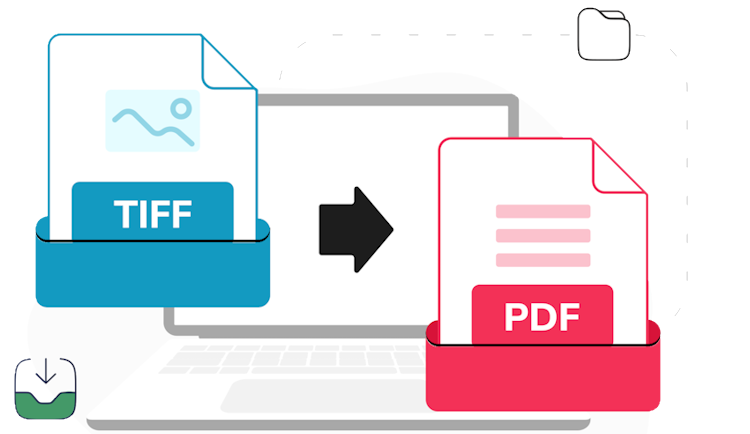Understanding TIFF & PDF File Formats:
TIFF (Tagged Image File Format):
This is the format that is used to store graphic images developed by the Aldus Corporation. With this format, we can store and share high-quality images with a large number of colors and fine details. Various factors can be achieved like depth color schemes like grayscale, white, and black which makes them prominent for graphic designs, printing, and publishing. These files are available in high quality and obviously, you have a risk that at the time of compression, the files can compromise in the quality. But no need to worry use the online TIFF to PDF converter which is widely compatible with operating systems.
PDF (Portable Document Format):
For the representation of documents, the Adobe System has developed a dynamic platform in a manner of independent applications and operating systems. Across various platforms, it is widely used for sharing and supports a wide range of content including texts, graphics, images, interactive elements, and multimedia. The online and fast TIFF to PDF converter allows you to combine multiple image formats into a single portable document format and the tool also supports various other formats. Additionally, the portable document format also supports metadata, and encryption of digital signatures, and increases document security.

Why Reduce File Sizes?
To optimize the storage space and improve the accessibility of data transformation we need to reduce the file size from TIFF (Tagged Image File Format) to PDF (portable document format). By compressing the files the organization can spread the capacity of storage to minimize the bandwidth usage.
Furthermore, compressed files enable effortless sharing, distribution, and access on different devices, enhancing smooth collaboration and user accessibility. Additionally, the reduction of files supports the organization in document management to conserve in various contexts.
Benefits of Using Compression Algorithms:
The compression algorithm plays a prominent role in decreasing the file size from TIFF to PDF documents and this results in smaller size of files without losing the quality of data. Here are breakdowns are as follows so look at these:
1. Lossless Compression:
The algorithm of compressions is generally used for tagged image file format to prevent the files from losing quality or image data. These algorithms function by detecting and removing duplicate data within the files, resulting in a smaller file while preserving the original content.
2. Lossy Compression:
The tagged image file format is used to eliminate the file size into the portable document format by maintaining its quality. This compression is utilized in the images where the minor loosing in quality is acceptable.
3. Image Compression:
Compression algorithms including JPEG2000 and JBIG2 are commonly used to reduce the file size which contains a significant amount of storage space.
4. Text Compression:
Some tools can compromise in quality during conversion some offer the best quality conversion. The best TIFF to PDF converter is developed to save your all file elements which helps to enhance the readability of the text.
Steps to Reduce File Sizes Using Online Converter:
The online TIFF to PDF converter is developed to navigate the conversion process easily and this is free of cost converter. So look at the below steps that help us to understand how to use online conversion for a better conversion process.
Step 1:
Click on the choose file button and put the file. You can also insert the file directly by dragging and dropping, Dropbox, or pasting through the URL.
Step 2:
After uploading the desired file press on convert button and get a fast conversion
Step 3:
The converter needs some seconds to convert TIF to PDF and after this step, you can easily download the file.
Conclusion:
In conclusion, the compression algorithm helps in the reduction of file size and users feel easy in the process of conversion. Additionally, the compression of files leads to faster transmission speed and these smaller sizes can not be compromised in quality after that you can easily share and print the portable document file. So take the help of TIFF to PDF converter and save your efforts along with time.


Comments (0)